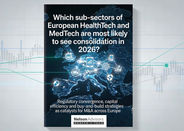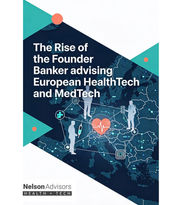Digital Health Hype Circle 2020
- Lloyd Price
- Apr 10, 2020
- 6 min read
Updated: Jul 1, 2023
For the fourth year in a row I would like to share my thoughts on what I see as the cutting edge, emerging, developing and mature technologies from around the digital health world visualised in a "Digital Health Hype Circle 2020" infographic.

Early Success
Panomics – Panomics refers to the range of molecular biology technologies including genomics, proteomics, metabolomics, transcriptomics, and so forth, or the integration of their combined use. Systems biology approaches are often based upon the use of panomic analysis data
Neural Implants – Neural implants are used for deep brain stimulation, vagus nerve stimulation, and mind-controlled prostheses. A neural implant is a device placed inside the body that interacts with neurons. Neurons are cells that communicate in the language of electricity. They fire electrical impulses in particular patterns, kind of like Morse code. An implant is a human-made device that is placed inside the body via surgery or an injection.
Technical Wellness – Once upon a time, one could jump in the bath or sniff some lavender oil and call it wellness. And though both of those options still obviously fall firmly within the wellness spectrum, technical wellness is twisting the action of taking care of oneself and accentuating it with a little high-tech drama.
DNA Infused Jewellery – DNA-infused jewellery features semi-precious stones, beads and custom rings that can be made from sterling silver or 10k white or yellow gold. The unique jewelry pieces feature encased DNA crystals within aerospace resin in the color of a consumer's choosing.
Social Isolation Tech – Social isolation technology aims to address the complex and usually unpleasant emotional responses to isolation. Social isolation technology typically includes anxious feelings about a lack of connection or communication with other beings, both in the present and extending into the future.
Health Monitoring Tattoo’s - Tiny patches on health monitoring tattoo’s can measure electrophysiological parameters and allow healthcare experts to monitor and diagnose critical health conditions such as heart arrhythmia, sleep disorders and brain activities noninvasively.
Carbon Dioxide Bracelets – Made from atmospheric carbon, carbon dioxide bracelets contain carbon dioxide captured from the air and converted into solid form.
Sony mSafety Watch – Sony has entered the Digital Health market with a remote monitoring wearable device called mSafety. The product is a wristwatch designed to capture and track patient data such as blood pressure, blood sugar and heart rate continuously.
Smart Fabric Health Glove – The Apple smart fabric health glove primarily integrates smart fabrics with integrated circuity and force sensors. The glove works in conjunction with an Apple device like Apple Watch or iPhone. Specialty sensors within the glove include ablood pressure sensor, a respiration sensor and heart rate sensor.
Google Deepmind’s Project Sideways – Most machine learning neural nets during their training phase use a forward pass, a transmission of a signal through layers of the network, followed by backpropagation, a backward pass through the same layers, only in reverse, to gradually modify the weights of a neural network till they're just right. Sideways is an alternative to that traditional rule for performing the forward and backward passes.
Decelerating Adoption
AI Powered Predictive Healthcare – artificial intelligence-powered predictive healthcare networks will help reduce wait times for patients and improve staff workflows. In the case of areas such as surgery and diagnosis, surgeons will trust AI more to augment their skills for surgery as well as diagnosis. AI will help doctors and clinicians learn from every patient, every diagnosis, and every procedure. This will improve health outcomes, reduce clinician shortages and also, allow the system to be financially sustainable.
Facebook’s Preventive Health Tool – Preventive Health is a new tool on Facebook that connects people to health resources and checkup recommendations from leading health organizations.
Robotic Process Automation – RPA is a digital worker, which has received the CE mark for medical devices. It automates computer-based knowledge work processes, carrying out the same computer tasks that a human would, but undertaken by a software robot instead.
Haptic Technology – Haptic technology or kinesthetic communication recreates the sense of touch by applying forces, vibrations, or motions to the user.
Longevity and Age Tech - companies and researchers focused on longevity are looking at bodily processes at the cellular level to see how aging progresses and trying to find the right drugs, treatments, and vitamins that might slow these processes down.
Lack of Evidence
Swallowable Tech – typically ingestible sensors housed in pills designed to help patients adhere to the medications their doctors prescribe. Sensor are not powered by a battery, they are powered by the gut of the patient swallowing it, using technology discovered two centuries ago.
Digital Twin – Healthcare is rapidly embracing digital twin technology. The goal of this trend is to deliver data-driven personalized medicine. Digital twins are built on computer-based, or in silico, models that are fed individual and population data.
BioHacking – Biohacking is a fairly new practice that could lead to major changes in our life. You could it call citizen or do-it-your-self biology. It takes place in small labs, mostly non-university — where all sorts of people get together to explore biology
IBM Watson Health – IBM Watson Health solutions are designed to augment human expertise and improve clinical and operational workflows. IBM Watson Health's deep industry expertise, data and analytics, and actionable insights are underpinned by security and trust.
Blockchain in Healthcare - Blockchain technology applications in healthcare shows promise for solving issues such as its used in EHR distribution of data and nationwide interoperability. However, more research, trials and experiments must be carried out to ensure a secure and established system is implanted before using blockchain technology on a large scale in healthcare.
High Potential
Asynchronous Messaging – Asynchronous communications technologies such as messaging, voicemail and email fulfils the initiator's need for immediate task completion without generating an interrupt for the recipient.
Personal Health Records – A personal health record (PHR) is a digital tool enabling individuals to manage and maintain their own healthcare, recording their own data, communicating with care services and accessing record.
Remote IOT Monitoring – involves collecting data from assets, and using that data to trigger automatic alerts and actions, such as remote diagnostics, maintenance requests, and other operational processes.
Conversational AI – Conversational AI refers to the use of messaging apps, speech-based assistants and chatbots to automate communication and create personalised customer experiences at scale.
Peak Interest
Remote Testing – remote testing allows the healthcare practitioners to identify the nature of illnesses or any other problems outside the conventional healthcare settings such as at home or in the work place. It is primarily employed in combating dementia, falls, diabetes, congestive heart failures, and infertility alongside several other medical conditions that require in-depth attention and prompt responses.
Machine Learning – Artificial Intelligence (AI), machine learning, and deep learning are taking the healthcare industry by storm. They are not pie in the sky technologies any longer; they are practical tools that can help companies optimise their service provision, improve the standard of care, generate more revenue, and decrease risk.
Online Symptom Checkers – A symptom checker is a system allowing the detection of any subjective evidence of an ailment or medical condition. Subjective evidence is defined as a symptom, as only patients can discover them. The symptom checker may be run by the user/patient or with the assistance of medical personnel, as symptoms are, by definition, known to the patient only.
Image Recognition – A common application of deep learning in healthcare is image recognition of potentially cancerous lesions in radiology images. Deep learning is increasingly being applied to radiomics, or the detection of clinically relevant features in imaging data beyond what can be perceived by the human eye. Both radiomics and deep learning are most commonly found in oncology-oriented image analysis. Their combination appears to promise greater accuracy in diagnosis than the previous generation of automated tools for image analysis, known as computer-aided detection or CAD
Online Therapy - At its core, online therapy’s objective is similar to that of brick-and-mortar therapy: provide tools, solutions, and ways to reframe your current issues, allowing you to overcome challenges in many areas of your life. Online therapy differs, however, in that it puts therapy in the palm of you hand and enables you to share your thoughts and challenges anytime you wish.

Previous Digital Health Hype Circles can be found by clicking on the links below ..


















































Comments